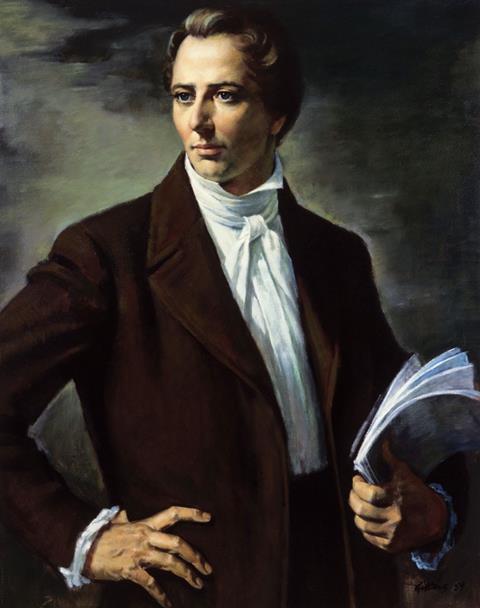Apologist Daniel Ray reflects on a recent episode of The Big Conversation and critiques a number of Bart Ehrman’s assertions about the resurrection
To watch The Big Conversation between New Testament scholars Bart Ehrman and Justin Bass, click here.
Rose died of natural causes at the age of 87. She was survived by her husband Earl, her five children, 14 grandchildren and ten great-grandchildren. Right up until the end, Rose remained mentally sharp as a tack, her wit and charm undiminished by nearly nine decades of life. Hundreds of friends and family attended her funeral.
A few days after the service, Earl awoke just after 3am, alone in his room at the Sequoia Senior Center, Rose’s empty bed beside his. The glow of the bright parking lights outside shone through the curtain. A moment later, as he glanced at the chair in the corner where Rose often sat, a soft, otherworldly light suddenly filled the room.
And in a moment, there at the foot of his bed, stood Rose. Robed in a glowing white gown, her youth seemed miraculously renewed, fresh and innocent as the day they first met. She smiled and looked intently into his eyes.
Read more:
Miracles and the meaning crisis
The bedrock facts of the resurrection
Is there historical evidence for the bodily resurrection of Jesus?
What’s stopping Jordan Peterson from rejecting Jesus’ resurrection?
4 facts that only fit the Resurrection
“I’m fine, Earl. And I love you.” She waved to him and faded back into the dark.
Earl thought he was in a dream. He stared at the red digits on the bedside alarm clock. 3:23.
“Rose? Is that you? Rose?”
The next morning, Earl tried telling the nurses what happened. “That’s nice, Mr. Fredrickson,” they told him. With a few glances of pity and indifference, they put his breakfast on the table.
“We’ll see you at noon for lunch, OK?” One nurse briefly put her hand on Earl’s shoulder as she turned to leave. The institutionally-weighty door closed behind them with a soft, metallic click.
While the above story is fictional, statistics suggest that some 60 percent of those who have lost loved ones have experienced something just like it; what psychologists call a ‘grief hallucination’.

But is a grief hallucination evidence of someone rising from the dead? Did Rose rise from the dead? Did Rose appear bodily to any other friends or family members? Did she appear to hundreds of others after her death?
Did Earl’s nurses even believe Earl saw Rose? Did Earl prearrange Rose’s appearances to other family members? Is anyone likely to believe Rose is bodily alive?
No.
Unlike the resurrection of Jesus, every single contemporary instance of a grief hallucination, the body of the deceased remains in the grave.
In a recent public debate, New Testament scholar and author Dr Bart Ehrman, who does not believe Jesus rose from the dead, suggested that one possible ‘natural’ explanation for the resurrection story is that like Earl, the apostle Paul (and perhaps Peter and Mary Magdalene) had experienced grief hallucinations of their deceased teacher.
It is unclear whether Ehrman believes this is likely what happened. But he does frequently mention in his public debates and appearances that people today do experience grief hallucinations and therefore it is possible that’s what happened with Jesus.
What is inconsistent with Dr Ehrman’s own historical standards is the fact that there is no historical data to support the hypothesis that Paul, Peter or Mary had a grief hallucination. Ehrman merely throws out an alternative ‘natural’ hypothesis, which ironically throws out his own historical-critical methods.
He’s careful, however, not to commit himself to grief hallucinations as an explanation because he well knows that there is a paucity of historical evidence to back it up. In the simplest of terms, a grief hallucination as an explanation for the resurrection of Jesus has very low historical and explanatory plausibility.

Ehrman also mentioned Joseph Smith’s visions and Smith’s acquaintances who signed affidavits swearing they too saw visions of heavenly beings and the gold plates. Ehrman’s argument goes that since Christians accept the apostle Paul’s testimony, Peter’s testimony and the testimony of Mary Magdalene, why don’t Christians accept the testimonies of Smith and his associates?
For starters, Smith dabbled in magic and the occult. He also claimed to be able to find buried treasure by means of special ‘seer stones’ placed inside of a hat. Smith was never successful in finding any buried treasure during the course of his lifetime unless one counts the golden plates, the central core and origin of the Book of Mormon.
But one central problem emerges with the gold plates and Smith’s visions in general. Smith was the only one to whom these visions and revelations were given. In addition, as scholar Robert M Bowman notes, many of Smith’s encounters and visions with the angel Moroni are often prearranged. There is nothing even remotely close to this in the Bible. No human being is told when an angel would appear to them. Angelic appearances to human beings in scripture are rare, shocking and unexpected.
But what about the alleged witnesses Smith assembled who claimed to have seen either the gold plates or the angel Moroni? Bowman spells out some of the difficulties of these witnesses.There were two groups of witnesses,
“…three and eight men, each saw the gold plates (and, for the three, saw the angel) on one occasion that Joseph prearranged and during which he was present. This fact means that Joseph was present and in control of these experiences, the only supposed events in which other individuals could corroborate his claims regarding the angel and the plates. The extent to which Joseph was in control is also indicated by the fact that he personally selected the witnesses, with ten of the eleven coming from his family or the Whitmer family…Later comments by the three witnesses confirm that they did not see the angel or the plates in a normal experience of seeing visible objects with their physical eyes.” (Robert M Bowman, Jr, ‘Jesus’ Resurrection and Joseph Smith’s Vision, Examining the Foundations of Christianity and Mormonism’)
Now, imagine the apostle Paul being present at every recorded instance of Jesus’ resurrection appearances and imagine Paul also specifically hand-selecting people from his own family and small group of friends, pre-arranging the times and places for people to physically see Jesus. We would have sufficient reason to be sceptical of Paul and his personally chosen eyewitnesses.
Get access to exclusive bonus content & updates: register & sign up to the Premier Unbelievable? newsletter!
Another factor that casts serious doubt upon the truth of Smith’s claims is Smith’s erroneous translation of Egyptian papyri known today by Mormons as the Book of Abraham. Scholars today have confirmed beyond any shadow of historical doubt that Smith’s hieroglyphic exegesis is light years beyond the pale. I’ve done a complete video presentation on the history and innumerable problems with the book of Abraham.
When pressed to explain why he does not believe the resurrection of Jesus really happened, Ehrman quickly brought up the laws of physics and asked if God could or would ‘break’ the laws of physics. But Ehrman just seems to assume a miracle is a ‘breaking’ of nature’s laws.
Is it?
What Ehrman tacitly sneaks into his inquiry is the idea that physicists know all the laws of physics. He failed to distinguish between what we as human beings know and a complete and exhaustive knowledge of physical laws (which no human being knows). As secular cosmologist Dr Sean Carroll observes:
“We are finite human creatures, with dramatically limited capacities of observation and calculation. We have trouble remembering a phone number, much less the positions and momenta of 6x10²³ or more particles. We don’t know everything about the exact state of the world, and we don’t even see the exact state of the world when we look at it.” (Sean Carroll, ‘The Biggest Ideas in the Universe, Space, Time, and Motion’)
Ehrman completely steps outside of his historical-critical methods and dons the lab coat here, confident that even if God existed, he would not ‘break’ the very laws he created. Laws of physics are unbreakable, even by God himself. I would agree that God would not ‘break’ the laws of physics anymore than he would violate his own moral laws. But I disagree that miracles ‘break’ the laws of physics, as I hope to show.
When pressed by his critics, Ehrman will often attempt to draw tight circles around the discipline and methods of history, reminding Christians that their arguments in favour of the resurrection are not finally historical arguments. He claims that history is distinctly separate from theology.
But Ehrman fails to see that his objections blur the very lines of demarcation he attempts to create between history and theology. When a believer wields such a cumulative-case approach to the resurrection, Ehrman is quick to dismiss it as unhistorical.
His objections (whether he believes them or just suggests they are possible alternative explanations) finally do not meet his own historical-critical standards, for they turn out to resemble the very apologetic cumulative-case approach he is quick to dismiss. His counter-apologetic arguments incorporate not only history (what really happened in the past), but theology (Jesus did not rise from the dead; God wouldn’t violate the laws of physics) and science (the laws of physics themselves).
Ehrman appears to have no problem with how theology, history and science are all intertwined here. But what about his theological claim that God could not or would not break the laws of physics? Everything here hinges on what Ehrman means by ‘breaks’. Is a miracle the breaking of physical laws or maybe are miracles revelations of deeper laws about nature? CS Lewis put it this way.
“By definition, miracles must of course interrupt the usual course of nature; but if they are real they must, in the very act of so doing, assert all the more the unity and self-consistency of total reality at some deeper level. They will not be like unmetrical lumps of prose breaking into the unity of a poem; they will be like that crowning metrical audacity which, though it may be paralleled nowhere else in the poem, yet, coming just where it does, and effecting just what it effects, is (to those who understand) the supreme revelation of the unity in the poet’s conception.
If what we call nature is modified by supernatural power, then we may be sure that the capability of being so modified is of the essence of nature - that the total events, if we could grasp it, would turn out to involve, by its very character, the possibility of such modifications. If nature brings forth miracles then doubtless it is as ‘natural’ for her to do so when impregnated by the masculine force beyond her as it is for a woman to bear children to a man. In calling them miracles we do not mean that they are contradictions or outrages; we mean that, left to her own resources, she could never produce them.” (CS Lewis ‘Miracles’)
In other words, miracles are very much in accord with the laws of nature, for they are revelations of a deeper reality beyond nature itself. Certainly, miracles shockingly contravene our limited understanding about nature and her laws, but that is not any kind of evidence that demonstrates God as breaking any of the laws he created and upholds by the word of his power.
Jesus? Rose? From the Dead? You can bet your life on it.
This article was originally published on Stories From The Cosmos.
Daniel Ray is a podcaster, writer and apologist with Watchman.org. He is co-editor and co-contributor to ‘The Story of the Cosmos’.

























